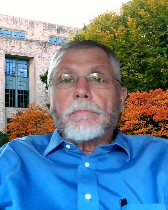James Sauls
Professor / Joint with Louisiana State University

About me
I received my BSc in Engineering Physics at Colorado School of Mines in Golden (1975), then moved to New York to do graduate work at SUNY-Stony Brook, where I received a Ph.D. in physics in 1980. I did post-doctoral research at Princeton University in New Jersey (1980-83), NORDITA in Copenhagen and Helsinki University of Technology (1983-84), then joined the Princeton physics faculty for four years (1983-1987). From 1987 - 2022 I was a member of the tenured faculty of the College of Arts and Sciences of Northwestern University in Evanston, Illinois, most recently as Sarah Rebecca Roland Professor of Physics. I am currently Hearne Chair of Theoretical Physics in the Physics & Astronomy Department at Louisiana State University and co-Director of the Horace Hearne Institute of Theoretical Physics [Hearne Institute]. I hold a courtesy appointment as Professor of Physics at Northwestern where I am also a member of the Graduate Faculty. [Curriculum Vitae]
What I do
Research: I study the physical world by combining mathematical analysis and observation. I formulate and apply concepts and principles (physical laws) to relate observations of physical phenomena of matter and radiation. The laws of physics are expressed as mathematical equations, so I formulate physical questions as mathematical problems.
Teaching: I teach physics - both the fundamentals as well as developments in current research. For me, teaching and research are entangled.
My field
Theoretical Physics. I started research in the nuclear theory group at Stony Brook investigating matter under extreme conditions thought to exist in the interiors of cold, dense stars called neutron stars. My current research spans the fields of condensed matter physics, quantum field theory and quantum information science and technology. Theoretical condensed matter research involves the discovery of new concepts related to the collective behavior of enormous numbers of atomic constituents, combined with the application of statistical mechanics and quantum theory to describe the behavior of macroscopic matter. [More on Condensed Matter Physics] This behavior is clearly revealed at low temperatures, and in the presence of strong electromagnetic or acoustic radiation fields where quantum effects are important. Matter under such conditions is described by quantum field theory. My current research focusses on materials and systems in which quantum effects govern the macroscopic behavior of these systems, including superconducting circuits and microwave resonators which are the backbone of a leading technology platform for quantum computing and supported by the National Quantum Initiative.
Awards and Honors
- Max Planck Research Prize in Theoretical Physics, 1994
- Fellow, Division of Condensed Matter Physics, APS, 1998
- John Bardeen Prize in Theoretical Superconductivity, 2012
- Distinguished Lecturer, University of Edinburgh, 2014
- Fritz London Memorial Prize in Low Temperature Physics, 2017
